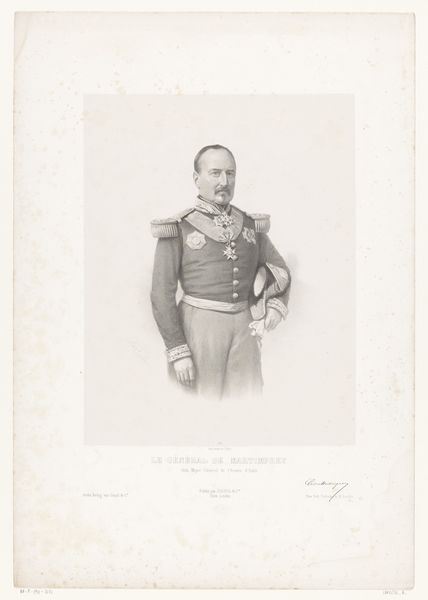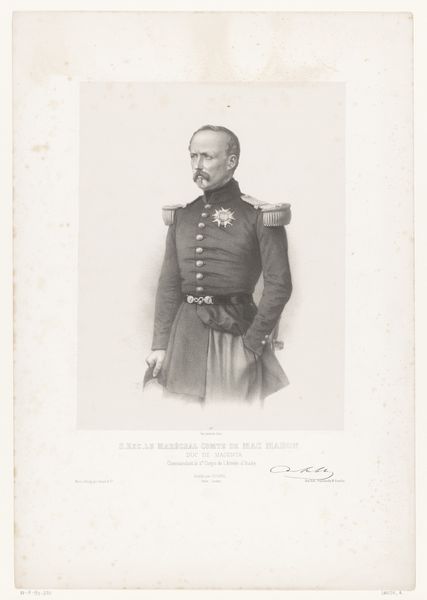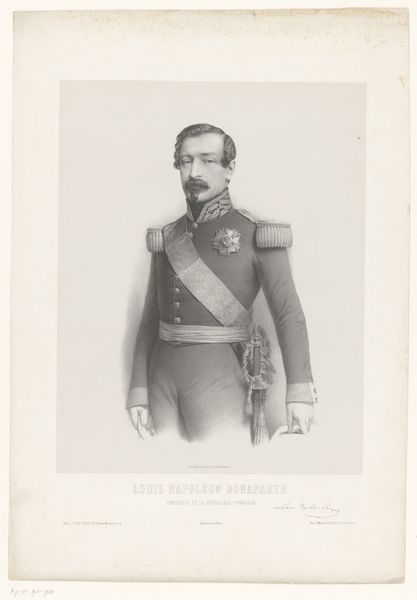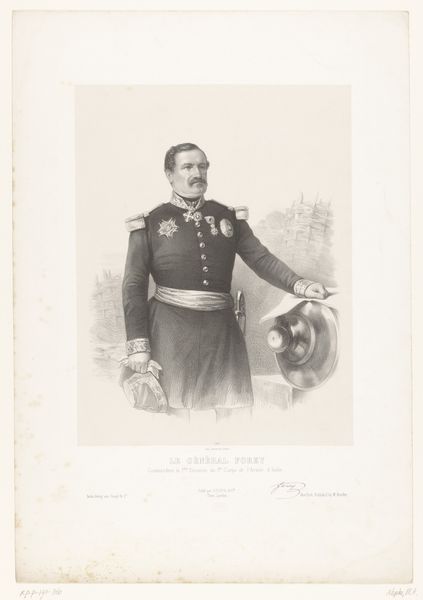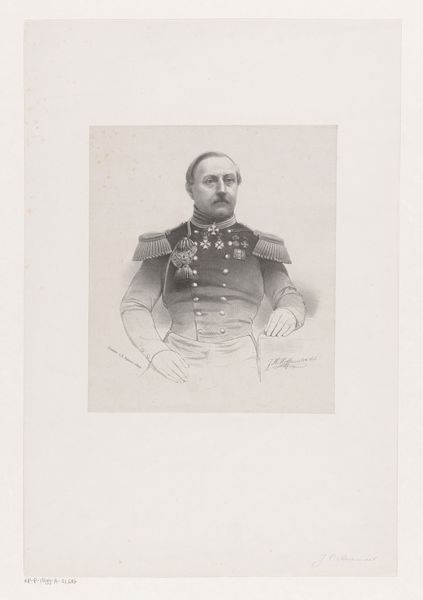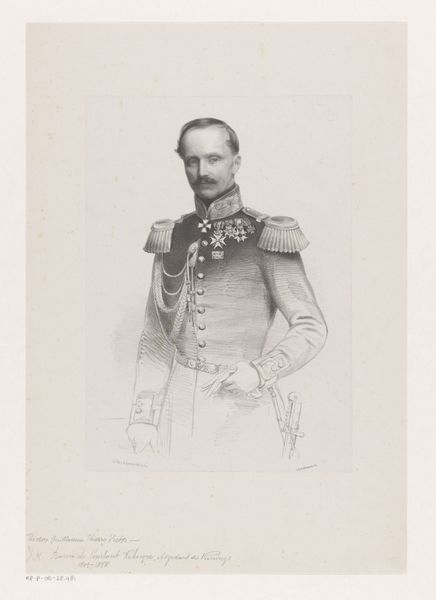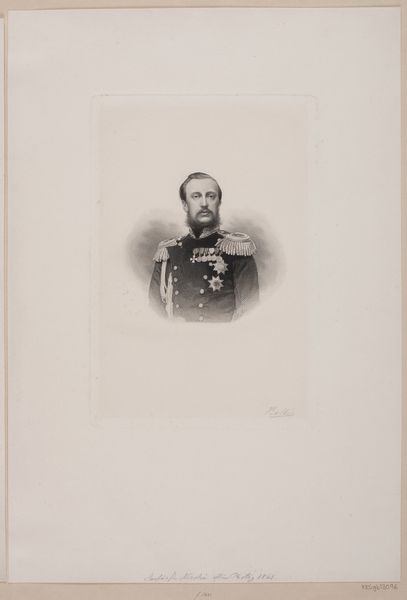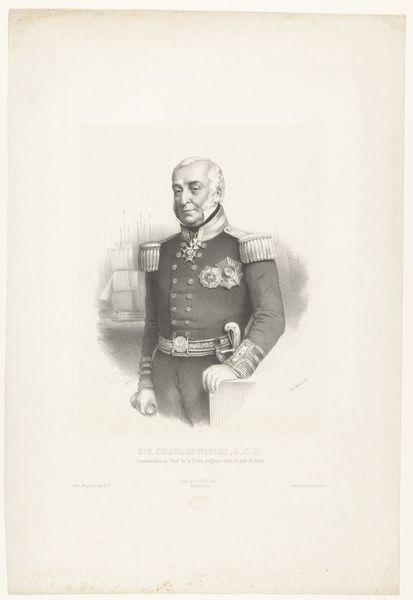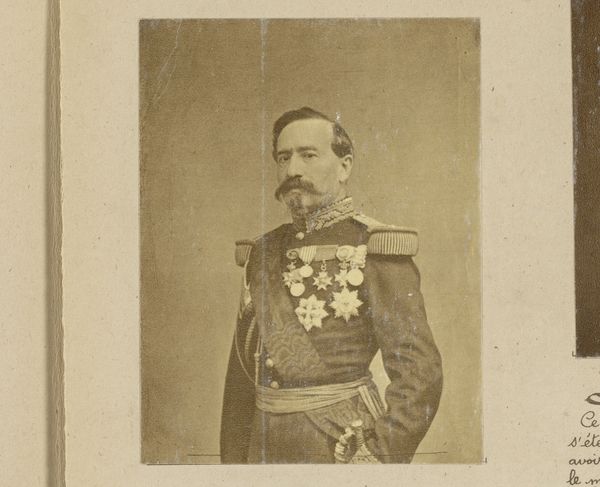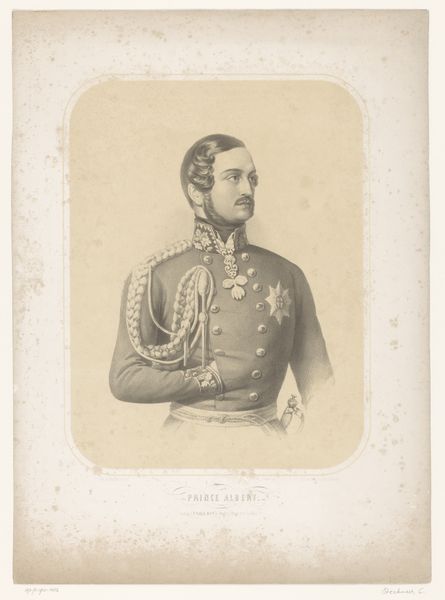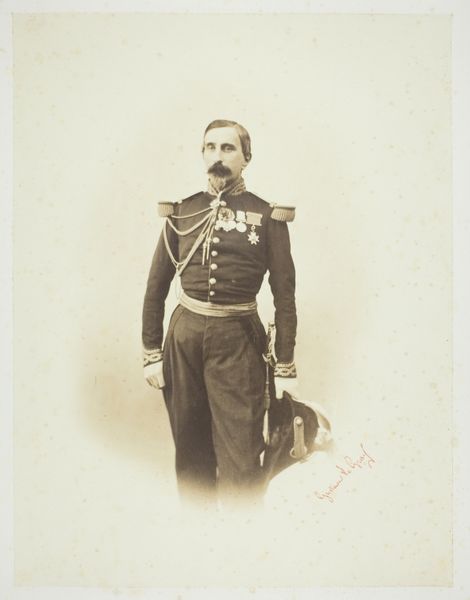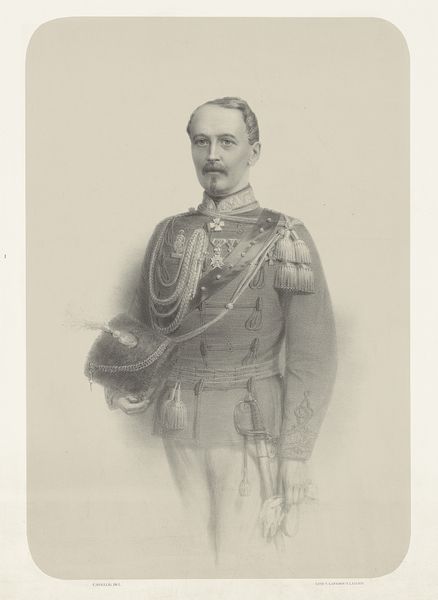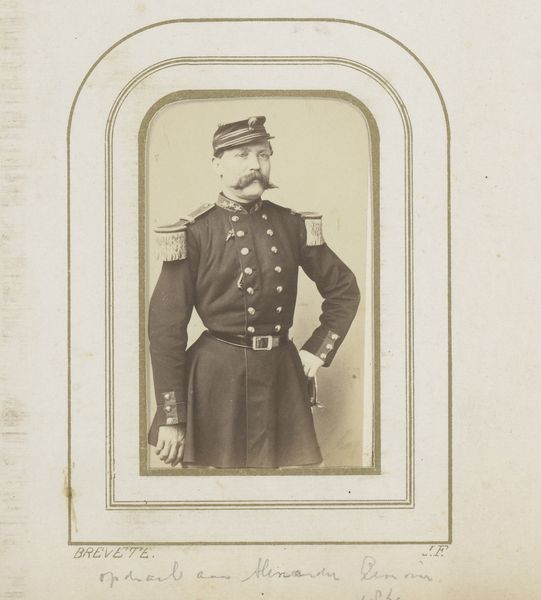
lithograph, print
#
portrait
#
16_19th-century
#
lithograph
# print
#
historical photography
#
academic-art
Dimensions: height 307 mm, width 220 mm
Copyright: Rijks Museum: Open Domain
Curator: This is a lithograph, specifically a print, crafted sometime between 1861 and 1862 by Ernest Guillon. The piece is titled *Portret van Pyotr Dmitrievich Gorchakov*. Editor: It's a stern, almost intimidating portrait, wouldn't you say? The stark contrast of the lithograph really emphasizes the details of his uniform and the medals. The oval format seems to add to the formality of the subject. Curator: Precisely. Guillon's adept handling of the lithographic medium results in a richness of tone, wouldn't you agree? The graduation from the darker hues outlining Gorchakov’s form to the softer grays of the background creates a striking relief. Note, also, how the use of line suggests a tactile quality, particularly evident in the depiction of the embroidery on the uniform. Editor: It's a carefully constructed image. I'm curious about its context. Gorchakov, a prominent figure, being memorialized and distributed as such. What impact would it have on those who viewed it, beyond mere aesthetic admiration? Think of the symbolic power! Curator: That's key. Consider that this work stems from a longer tradition of portraiture aimed to immortalize figures of importance—here the image serves a specific social purpose, as portraiture would have historically acted as a statement of status. In his depiction of the sitter's medals, uniform, and severe expression, Guillon transmits the sitter’s official power and social position to the print’s intended audience. Editor: A kind of propaganda, even? Reinforcing power structures? Given his prominence, this print was not simply an artistic endeavor, but a public declaration, designed to instill a particular vision of authority within 19th-century Russian society. I wonder how this image was initially received—as a powerful endorsement, or a symbol of stifling control. Curator: An astute point. Such formal depictions are always deeply embroiled in societal power dynamics. The composition here works to not only immortalize the man, but a specific ideal of authoritative Russian identity. Editor: Absolutely. So, what we see here is not just a likeness, but a carefully constructed social narrative—a visual argument of authority captured through a specific material and aesthetic. Curator: Indeed. I found exploring this piece particularly rewarding, focusing on its form to unpack some of its rich implicit features. Editor: Likewise, and, from my viewpoint, looking into the socio-political conditions is what truly shapes its meaning for viewers today.
Comments
No comments
Be the first to comment and join the conversation on the ultimate creative platform.
